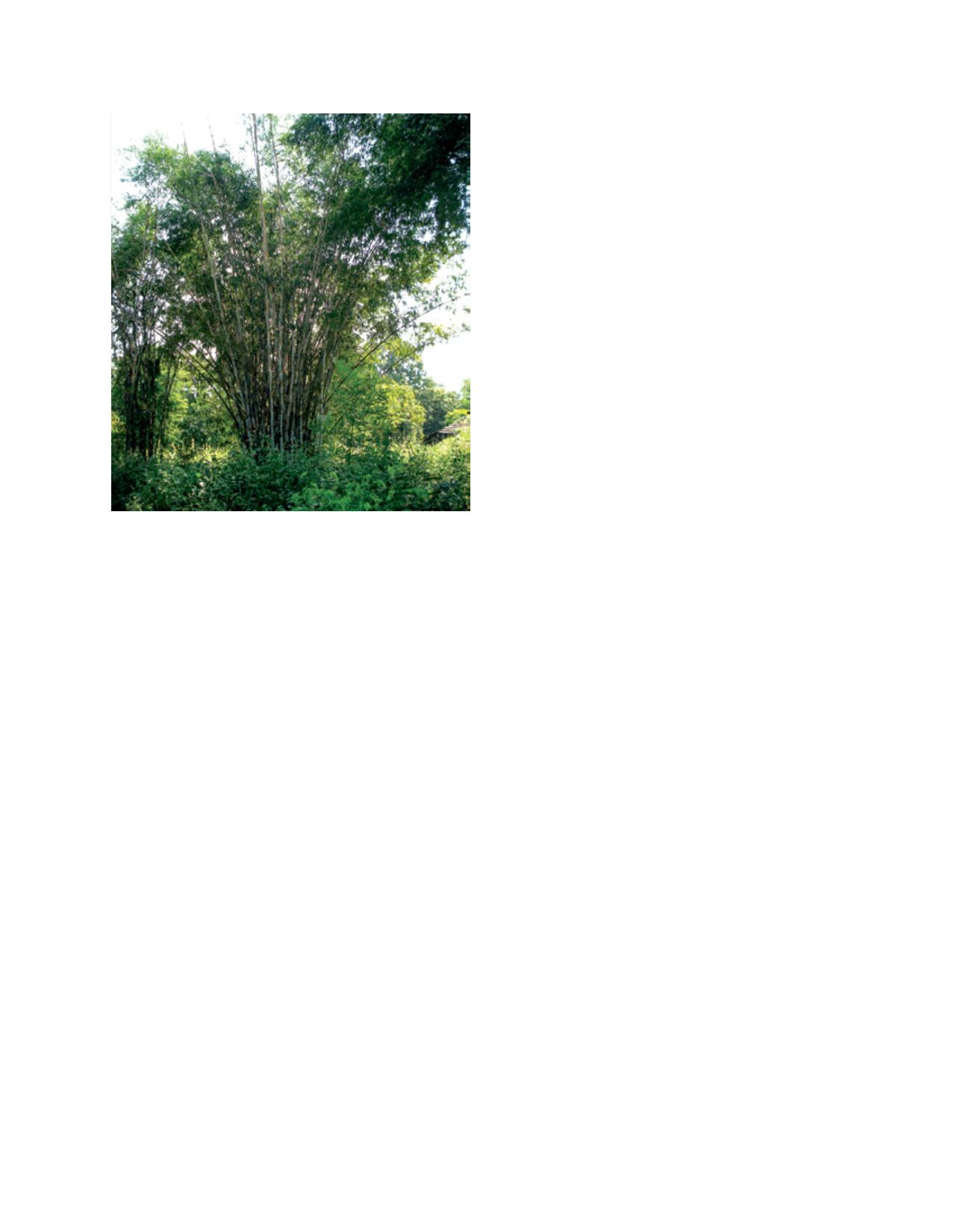

[
] 115
sale of raw HHC is up to 50 per cent of annual income, and
if briquetted, it reaches 200 per cent. This can be raised
through efficient stoves as described above. Presently,
4,286 women are collecting charcoal in turn, which is
processed by 230 briquetting micro-enterprises each with
one hand-briquetting mould between them. While it bene-
fits all women using fuelwood, single mothers and widows
see a major benefit since they have significantly reduced
household income. The dependability of the income, which
is year-round, makes all the difference. Households derive
income from the collection of charcoal formed during
cooking using fuelwood, from selling the HHC and from
dividends from the three processing enterprises set up
(WODGRA in Tanzania; Shakti and Black Gold in India
with a total installed capacity of 9,000 tons per year which
can benefit 25,000 households).
The stereotype propagated by society and governments is
that farming communities ‘grow’ food and urban communi-
ties ‘buy’ food. The concept of ‘Farmer = Food’ is common
but ‘Farmer = Energy’ is not. The second key strategy for
a robust source of income being advocated by INBAR and
implemented by the Centre for Indian Bamboo Resource
and Technology (CIBART) is that farmers should also grow
biomass crops for fuelwood, for their own use and sale to
others as a mainstream source of income. This is relatively
new for farming households because fuelwood is commonly
gathered from the forest for free, such that biomass was
never valued or thought of as an income source. A change
to ‘Farmers = Food + Energy’ can bring significant benefits
to farmers, enhance their income and quality of life, lead to
resilient livelihoods, release pressure from forests and let
them recover. It would also lead to enhanced areas of perma-
nent green cover.
Bamboo is a miracle crop, perhaps the most versatile of
them all. It is easily the icon of sustainability just as the
Panda is the icon of biodiversity. It is a tree and a grass at
the same time, straddling the sectors of forestry and agricul-
ture. Botanically, bamboo would be classified as a pioneer
species since it can grow on the poorest soils and amelio-
rate them. It can also grow on the richest soils. On poor
soils it would subsist and survive with low production as
in forests, while if fertilized and irrigated as an agricultural
crop, bamboo provides the highest biomass yields of all
woody plants. It is drought- as well as flood-tolerant and
even tolerates complete surface destruction by forest fires
and ‘slash-and-burn’ agriculture. It is a perennial plant that
is annual in behaviour, putting out new poles from under-
ground rhizomes each year. For a farmer it is, therefore, an
annual crop while for the forester it is the perennial tree.
Bamboo plants can be grown by each willing household
in the homestead and farm boundary. Thirty-five bamboo
clumps could generate adequate bamboos for fuelwood and
livelihood use. It would be beneficial to carry this out at
the household level since there is individual ownership and
incentive. Animals need feed, which is commonly in short-
age. Most livestock eat bamboo leaves. In Ethiopia, it is a
staple food for donkeys. Cows and buffaloes eat bamboo
leaves; in upland areas this is often the only green fodder
available during winter. Bamboo leaves can also substi-
tute fish feed for up to 50 per cent. Chickens originated in
bamboo groves and readily eat bamboo even from the broiler
stage. Bamboo fodder and feed is thus part of the food secu-
rity of the household.
Bamboo biomass and agriresidues from the farm are being
used to produce briquettes that industries need for use in
boilers. Currently, four processing units are operational
with a combined capacity of 12,000 tons per year, which is
US$500,000 in new income to the farming households who
would have otherwise burned the residue in the fields.
Such biomass could also be used to generate power: 1.2kg
of biomass produces 1 kWh. A typical bamboo pole of 12kg,
would then be 10 units of power which is more than a rural
household would need in a month. Small-scale biomass-based
power units can act as intermediate markets for local agriwaste
biomass and for empowering rural households to enhance their
quality of life, operate water pump sets, flour mills and the
like, as has been demonstrated in a CIBART project in India.
Globally, 1.3 billion people live in energy poverty.
Growing bamboos would bring several environmental
benefits including soil amelioration and the rehabilitation of
degraded lands. In Allahabad district in Uttar Pradesh in India,
the growing of especially bamboo helped rehabilitate tens
of thousands of hectares of fertile farmland degraded by the
removal of topsoil for brick-making. This won the US$1 million
Alcan Prize for Sustainable Development. The 68 million
hectares of degraded land in India, and 500 million hectares
in Africa can similarly benefit from bamboo planting, as can
the rural households in those areas. This includes abandoned
farmlands, which can be rehabilitated and made productive.
While the average biomass of the leaves on the plant at
any time is around 10 per cent, this does not account for
the leaves that have dropped over the year (say 10 per cent).
Bamboo in a homestead
Image: K. Rathna, CIBART
D
eep
R
oots
















